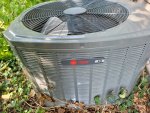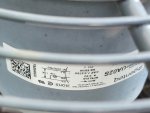- 1,765
- 4,018
- 113
- Location
- Hidden Valley, Az
Most single-phase motors pull around 600% of running current to get up to speed.
Unless it is an inverter-type genset, the 60Hz freq (speed) goes down and things go awry.
The problem with small gensets is that kind of demand has a lower load impedance than the alternator, and can't provide enough energy above a power factor of .8...
IOW, you need a bigger gen or less motor loads.
Unless it is an inverter-type genset, the 60Hz freq (speed) goes down and things go awry.
The problem with small gensets is that kind of demand has a lower load impedance than the alternator, and can't provide enough energy above a power factor of .8...
IOW, you need a bigger gen or less motor loads.



